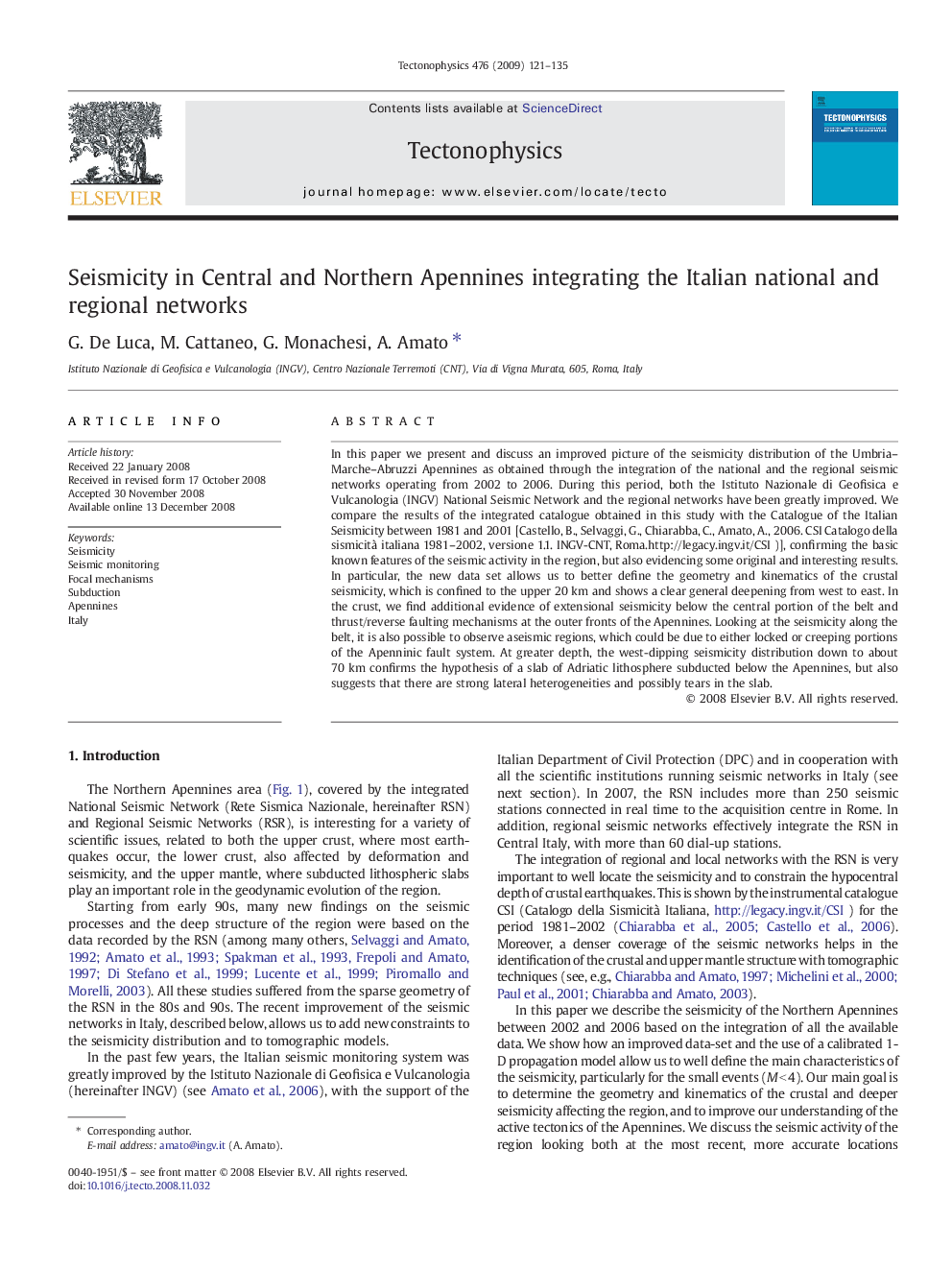| Article ID | Journal | Published Year | Pages | File Type |
|---|---|---|---|---|
| 4694025 | Tectonophysics | 2009 | 15 Pages |
In this paper we present and discuss an improved picture of the seismicity distribution of the Umbria–Marche–Abruzzi Apennines as obtained through the integration of the national and the regional seismic networks operating from 2002 to 2006. During this period, both the Istituto Nazionale di Geofisica e Vulcanologia (INGV) National Seismic Network and the regional networks have been greatly improved. We compare the results of the integrated catalogue obtained in this study with the Catalogue of the Italian Seismicity between 1981 and 2001 [Castello, B., Selvaggi, G., Chiarabba, C., Amato, A., 2006. CSI Catalogo della sismicità italiana 1981–2002, versione 1.1. INGV-CNT, Roma.http://legacy.ingv.it/CSI )], confirming the basic known features of the seismic activity in the region, but also evidencing some original and interesting results. In particular, the new data set allows us to better define the geometry and kinematics of the crustal seismicity, which is confined to the upper 20 km and shows a clear general deepening from west to east. In the crust, we find additional evidence of extensional seismicity below the central portion of the belt and thrust/reverse faulting mechanisms at the outer fronts of the Apennines. Looking at the seismicity along the belt, it is also possible to observe aseismic regions, which could be due to either locked or creeping portions of the Apenninic fault system. At greater depth, the west-dipping seismicity distribution down to about 70 km confirms the hypothesis of a slab of Adriatic lithosphere subducted below the Apennines, but also suggests that there are strong lateral heterogeneities and possibly tears in the slab.
